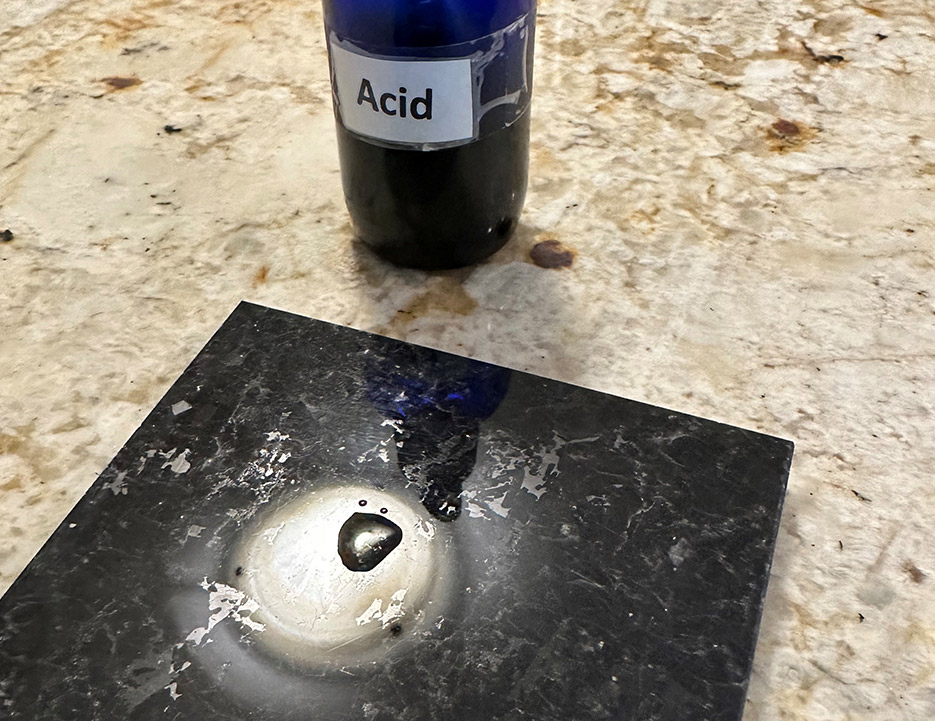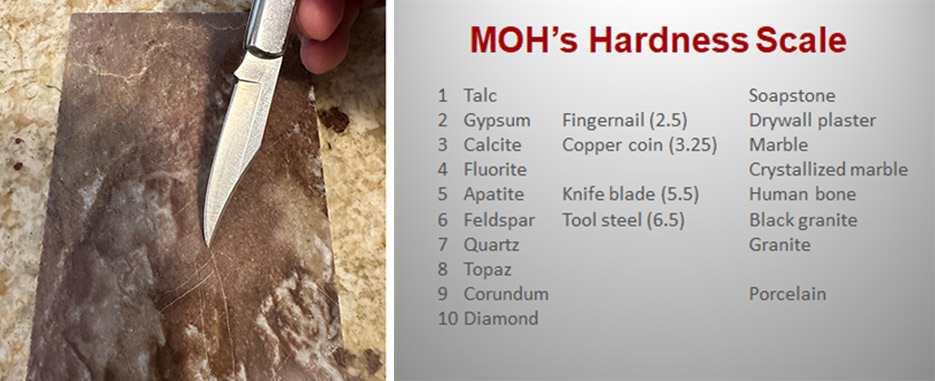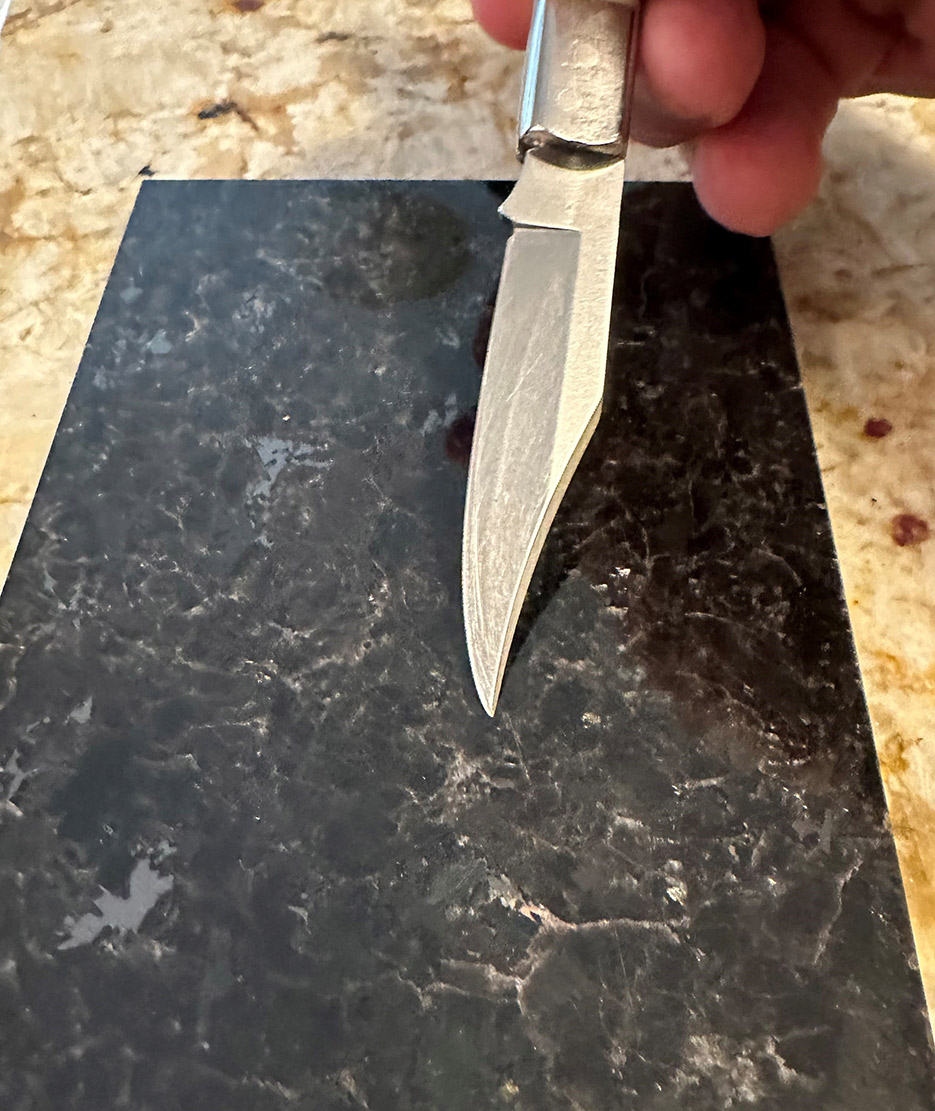Stone Restoration and Maintenance Corner: What Type of Stone is It?
Bob Murrell
M3 Technologies
Photos by Bob Murrell
When I get a call from a restoration contractor regarding a particular type of stone, I ask them to help me determine a course of treatment by determining exactly what type of stone they are dealing with. There are well over 9,000 varieties of stone used in the worldwide dimensional building industry. As you can imagine, each of these stones have their own characteristics. Of course, many stones are similar and can be grouped together.
I have been in this business for well over 40 years now and I come across a stone that’s new to me fairly routinely. I am continually learning new tricks, implementing new technology, and learning from my clients of many years. This business must be a continuing education process so as to keep up with the countless varieties of natural stone one will encounter.
The number of types of tones in the world is great. They are composed of many different minerals, all of which have a hardness factor and other physical properties of concern. We must be able to determine some of these material properties, in order to prescribe the correct procedure for whatever issue ails the install.
So out of all of the granites, marbles, limestones & travertines, gneisses, quartzites, dolomitic marbles & limestones, serpentines, basalts, sandstones, onyx, alabaster, slate, and… well, you get the point. Just think of it, some translucent (ability to pass light) stones are onyx, alabaster, and obsidian. You would think they would have other similar characteristics too, right? Onyx and alabaster do share many common characteristics, however, obsidian does not.
The characteristics we are most concerned with are the type of minerals the stone contains and the hardness level associated with the stone. There are many metamorphic and some sedimentary stones that are mainly comprised of calcium carbonate, such as marbles, limestones, travertines, onyx, and alabaster. Igneous stones that contain quartz are many as well, such as granite, quartzite, gneiss, basalt, obsidian, and others.
 |
|
Marble, a stone containing calcium, reacts to application of an acid. |
We need the ability to test for these minerals and we have some easy methods for doing so. Calcium carbonate, being a metal salt, will react violently when subjected to a strong acid. When a small amount of acid is applied to the surface of a stone containing calcium, the acid will effervesce on the surface. This reaction results in the release of CO2 to the atmosphere and also leaves an etched and new deteriorated surface area where the action took place. This etch can be felt, if it is severe. The etch sticks out like a sore thumb on a glass-like finish polished surface. This is typical of many marble countertops, vanities, and floors.
So: all of the stones, natural and man-made, that contain calcium carbonate will etch. This includes marble, limestone, terrazzo, engineered marble, onyx and similar stones. To confirm this, simply put a small drop of acid on the material (in an inconspicuous area!) and observe the reaction. If it effervesces and leaves a subsequent etch, it is a calcium-based stone. Etching must be either re-polished or honed and re-polished to remove the etch and restore the surface.
If you apply the same acid test on a granite or similar material, guess what happens? Basically, nothing happens, at least to the stone itself. The acid could clean off any surface soiling but other than that, it doesn’t have any detrimental effects on the surface of the granite. Keep in mind that the acid would normally not affect a quality porcelain material, either. So an acid reaction means the material contains calcium and no reaction generally means it does not.
You should start to notice there is a pattern here. We are starting to reduce the thousands of stones into two groups. Those stones that contain calcium and those that do not. So how many types of stone in the world are there? Two.
 |
|
Common objects can be used to test a stone for its hardness on the Mohs scale. Above, left: Marble is easily scratched by a steel knife point. |
But what if you don’t have any acid to test with? Wrong answer, you should always have some with you! There is, however, another test that can be applied to a stone material to help determine if it contains calcium or does not: a scratch or hardness test.
The Mohs Hardness Scale lists the hardness of materials from talc at 1, to diamond at 10. Mohs says that it takes a higher number to scratch a lower number. This means a Mohs scale reading of 6 can scratch any material 5.9 and below, but can’t scratch any number above 6. Make sense?
If you take a simple pocketknife and apply the point to the material and gently pull it across, if it is below the hardness of the knife blade (about 6 to 6.5), it will scratch any softer material below that. Marble and limestone are typically around 3-4 and will easily scratch. Obviously, as with the acid test, this should be performed in an inconspicuous area. So most stones that contain calcium, will easily scratch.
Granite and other similar stones are a 7 on the Mohs scale, therefore the knife point will not easily scratch it. So which type of surface do you want for kitchen countertops? Despite being both chemically sensitive and easier to scratch, soft marble is being used more and more commonly for work surfaces in kitchens. Hopefully, most of these marble kitchen countertops are honed and therefore do not show the etching and scratching as badly.
 |
| On the Mohs scale, most granite is harder than a knife blade, so the typical granite will not be scratched by a knife point. |
So how many types of stone in the world are there? Two. Those that contain calcium and those that do not. Knowing this, the stones that contain calcium are polished with rouges and oxides that contain a special acid. This process actually uses the etch to aid in polishing, and excellent production rates can be achieved. The acid does not work on granite materials so they are strictly mechanically polished with rouges and oxides, and because they are so hard, this process is typically much slower paced.
So the processes and tooling that work on calcium-based stones are different from those that are used for the harder materials like granite. If you can determine which group material– calcium or no calcium –you’re dealing with, you will be ahead of the game!
As always and before beginning any new project, I recommend submitting a test area to confirm the results and the procedure, prior to general application of a stone or hard surface restoration/maintenance project. Also, the best way to help ensure success is by partnering with a good distributor, like BB Industries, that knows the business. They can help with technical support, product purchase decisions, logistics, and other pertinent project information.
Bob Murrell has worked in the natural stone industry for over 40 years and is well known for his expertise in natural stone, tile, and decorative concrete restoration and maintenance. He helped develop some of the main products and processes which revolutionized the industry, and is currently the Director of Operations for M3 Technologies.
Send your comments and questions to Bob at attn:publisher@slipperyrockgazette.net .